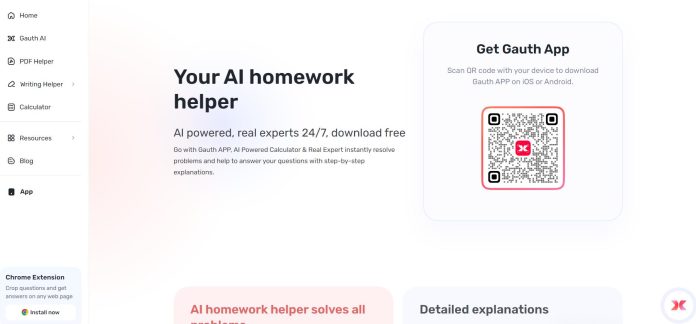Asking the right questions is a very important aspect of meaningful research. In general, open-ended questions are one of the most critical ones because they encourage detailed and thoughtful responses. Formulating effective open-ended questions, whether for academic, professional, or personal research, will result in richer and broader insights with regard to the subject matter.
To discover more resources for research and scholarly activity, click here to access Gauth’s website. Here is a guide on how to design such questions to enhance research results.
Learning About Open-Ended Questions
While a closed question only gets an easy “yes” or “no,” open questions require more elaboration, description, and even opinions. The style of the open question is so broad that it can include a mix of all responses, thus demanding different aspects and greater involvement on the part of the respondent. The finest possible attention needs to be given to language and purpose in developing these questions to ensure maximum effectiveness.
Identify the Research Objective
The first step in formulating open-ended questions is understanding the research goal. Clarifying the objective provides direction and scope for the inquiry. It helps in framing questions that are both relevant and productive in yielding the kind of information needed.
- What specific information is being sought?
- What are the underlying themes of the research?
- Which areas require detailed exploration?
By focusing on the research objective, open-ended questions can be tailored to address critical aspects of the topic, ensuring that responses contribute meaningfully to the overall research goals.
Focus on the “How” and “Why”
Open-ended questions often start with “how” or “why,” as these words naturally lead to deeper inquiry. These types of questions are essential for uncovering processes, reasons, and motivations. For example:
- How does this phenomenon affect the target population?
- Why do people choose one option over another?
Questions that begin with “what” can also work effectively, especially when asking for descriptions or explanations, such as:
- What are the challenges faced in implementing this strategy?
Focusing on these words ensures that questions invite expansive answers, enabling researchers to gather qualitative data that is both insightful and detailed.
Keep Questions Clear and Neutral
Ambiguity in questions can lead to confusion, which may result in unclear or unfocused responses. Ensure that questions are clear and concise while avoiding jargon or overly complex phrasing. Additionally, neutrality in wording is critical. Leading questions can bias the response, which can compromise the integrity of the research data. Neutral, non-directive questions encourage respondents to share their genuine thoughts and experiences.
Encourage Storytelling and Descriptions
Questions that ask for stories or descriptions help elicit detailed, vivid responses. Encouraging respondents to share their experiences can lead to deeper insights and more meaningful data. These types of questions allow respondents to narrate their perspectives in a way that is personal and comprehensive. Some effective prompts include:
- Describe a situation where you faced this issue.
- Can you explain the process you followed to achieve this outcome?
These questions open up opportunities for the interviewee to reveal more than just surface-level information, providing rich, qualitative data.
Gauth’s AI tools ensure users can focus on the critical thinking necessary for formulating open-ended questions while receiving guidance in tackling challenging topics. Click here to access Gauth’s website for more information on how to streamline academic success.
Conclusion
Formulating open-ended questions is a key skill in research, enabling the gathering of comprehensive and nuanced information. With AI tools like Gauth, crafting high-quality open-ended questions and navigating academic challenges becomes more accessible, empowering students and researchers alike to achieve their goals.









